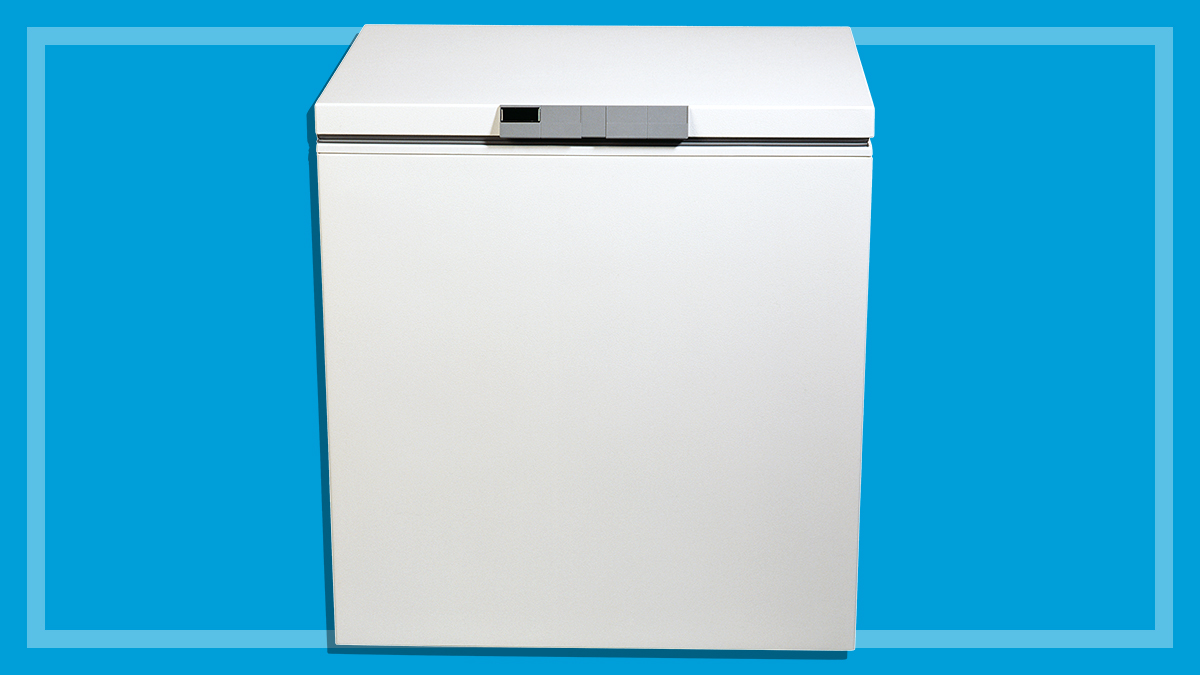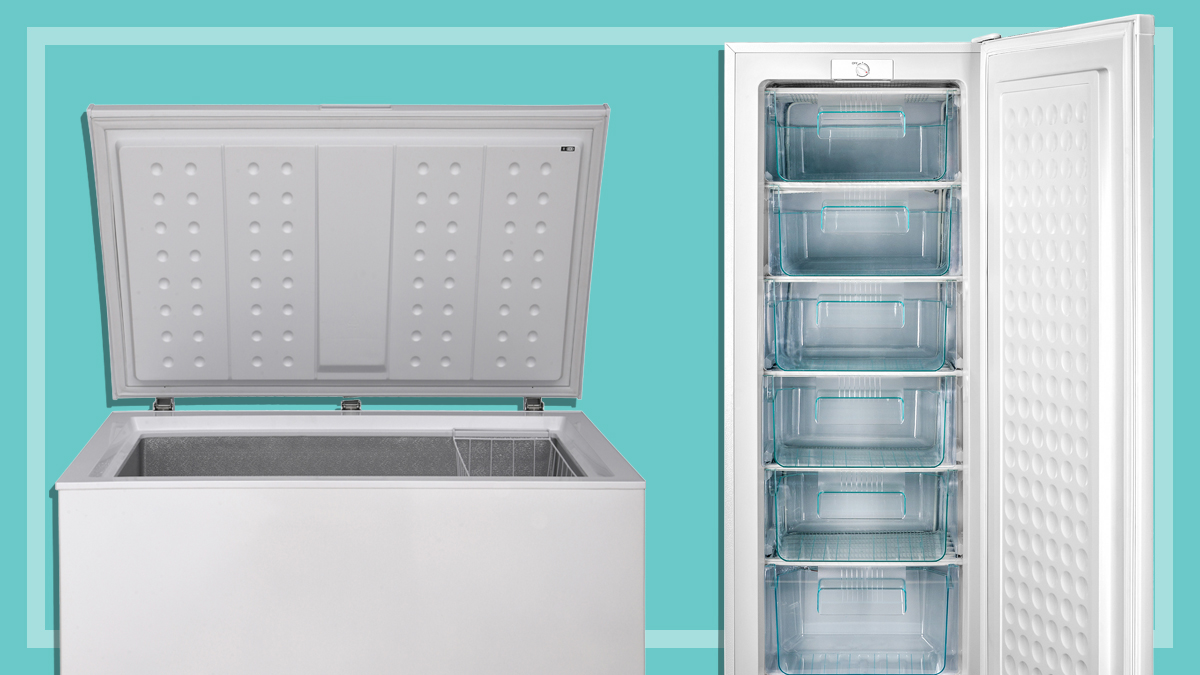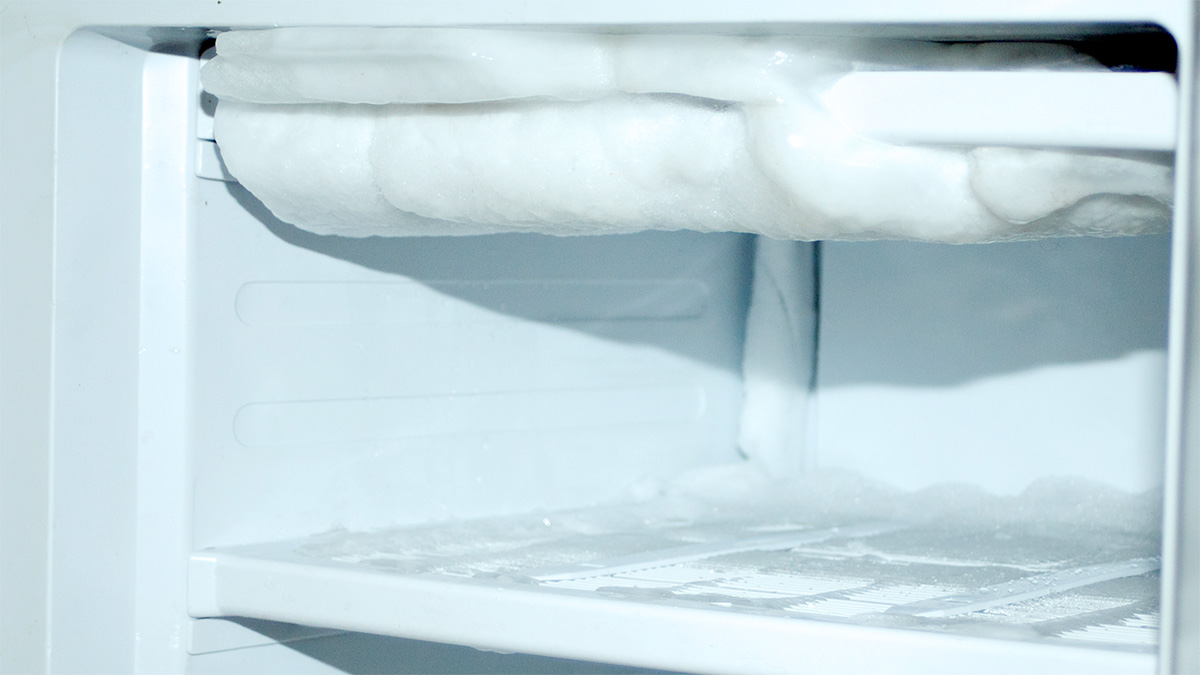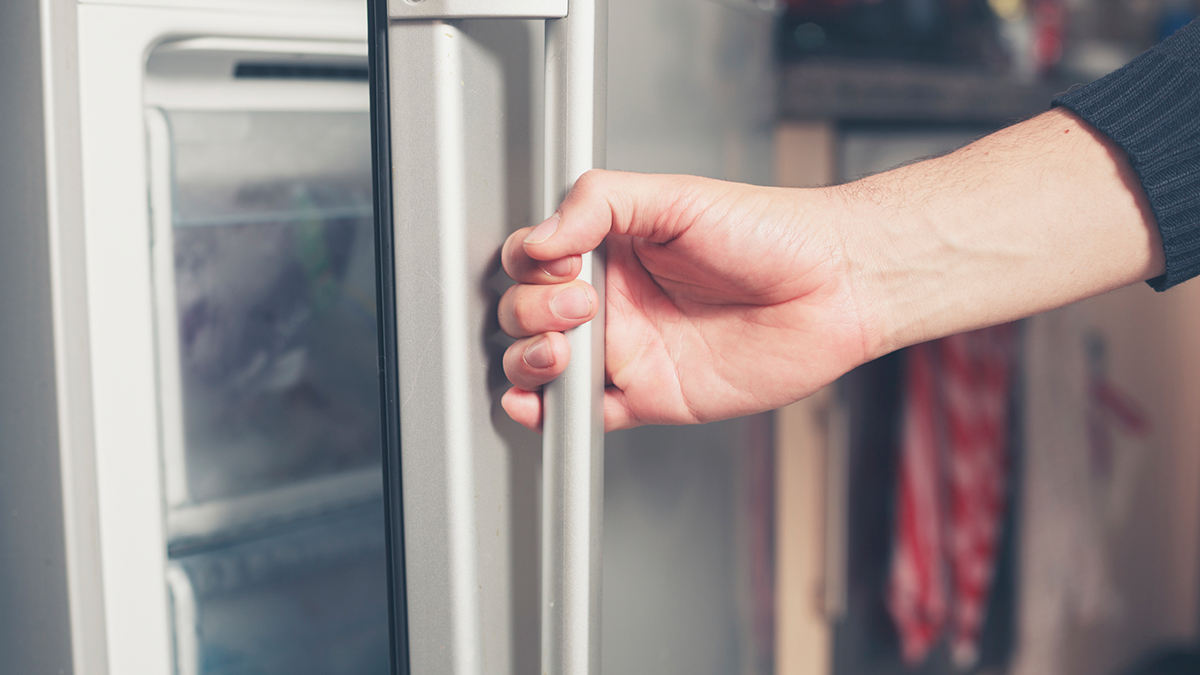Get our independent lab tests, expert reviews and honest advice.
How your freezer can help save you money
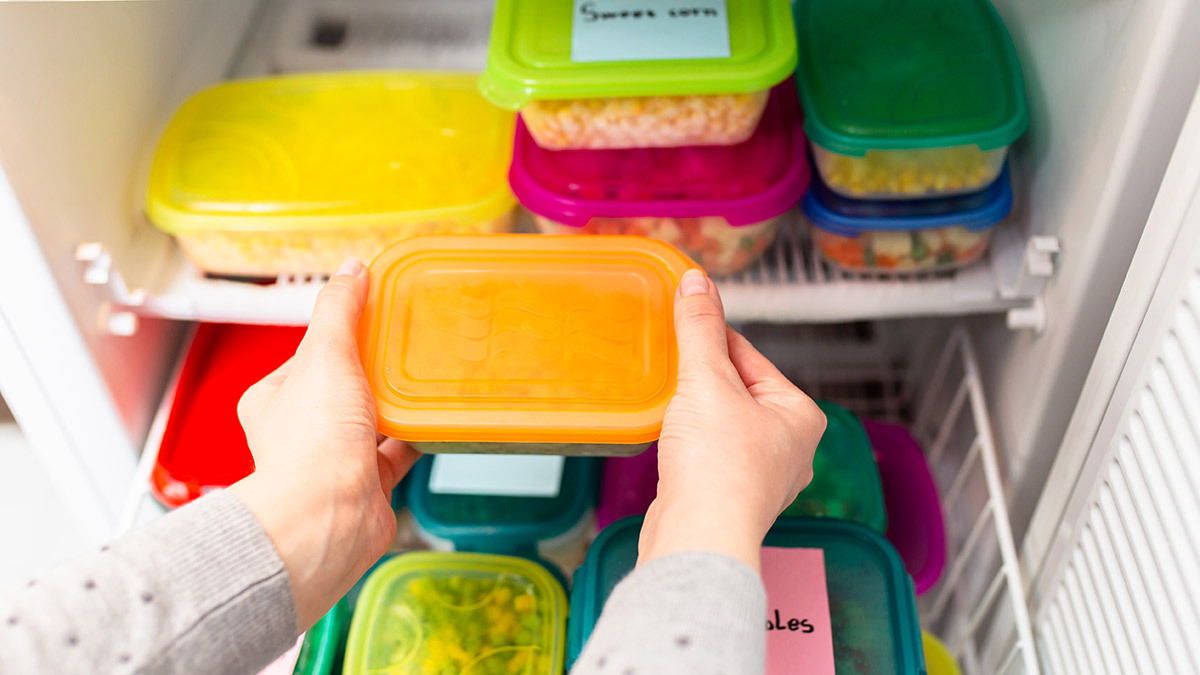
If you’re trying to trim the fat on your household expenses, making changes to your food budget is one way to get started. Batch cooking meals is a great way to reduce your costs and make meal planning easier.
On this page:
- How a freezer can save you money
- What you can and can't freeze
- Our expert tips for batch cooking and freezing food
But once you’ve cooked all those meals, where can you store them? Standard fridge freezers don’t always have enough space to accommodate a batch cooking frenzy, and there’s no point putting in all that effort (and money) if the food spoils.
A standalone freezer is the ultimate companion to help reduce your food spend
Enter the standalone freezer: the ultimate companion to help reduce your food spend. It’ll give you space to house multiple batches of meals, plus it’ll enable you to buy some foods in bulk, which can often work out cheaper than buying smaller amounts.
Chest and upright freezers are also a boon to big families and entertainers who need to store large amounts of food at any given time, and they can help extend the life of some foods, which will minimise waste.
We’ll show you how to make the most of your freezer to save dollars at the till.
How a freezer can save you money
Standalone freezers aren’t just for stashing indecent amounts of ice cream – they can also be a big help when it comes to organising your household’s meal planning. And smart planning can save you money, so your household budget will stretch further.
Here’s how a freezer can help save you money:
- They’ll give you the space to store lots of batch-cooked meals, some of which are serious budget extenders. For example, slow cooked meals are perfect for batch cooking and freezing and you can use cheaper cuts of meat and pad them out with legumes.
- If you have a freezer full of ready-made meals or ingredients, it’ll make life easier on those nights when you can’t be bothered to cook. Just defrost something you prepared earlier and you’re all set. Plus it’ll help curb your takeaway expenditure since you’ll have dinner ready in no time.
- Buying in bulk can be far cheaper in the long run. But where will you store those 3kg of sausages you bought on super special, or the five loaves of bread you picked up for a dollar apiece? In your standalone freezer, of course!
- You can stock up on seasonal fruit and veg when it’s cheap so you don’t have to pay more later in the year when it’s scarce and expensive.
- You’ll waste less food if you’re savvy with how you use your freezer. Turn bread that’s past its prime into breadcrumbs and put them on ice; slice up overripe fruit and freeze for smoothies; steam and freeze veggies like beans, broccoli, carrots and corn that you won’t use up in time; pop ingredients like stock, wine, citrus juice or coconut milk into ice cube trays and pull them out as needed; keep nuts from going rancid by storing them in the freezer; and whizz up limp herbs with olive oil and keep them in the freezer ready to liven up dishes.
CHOICE tip: Check the running costs before buying a standalone freezer. Some can be more expensive to run than others, and you don’t want to negate the savings you’ve made on food by having to pay higher energy bills.
What you can and can’t freeze
Not sure whether that sad-looking cauliflower can be resurrected after a stint in the freezer? Wondering if shredded cheese will lose its zing after being on ice?
Here’s a rundown of what to put in the freezer and how best to do it.
| Name of food item | Can you freeze it? | Expert comments |
|---|---|---|
| Biscuits | Yes | Freeze cookie/biscuit dough in portions on a tray, then transfer to a container. |
| Bread | Yes | Slice before putting it in the freezer. Wrap well to avoid freezer burn. |
| Cakes and muffins | Yes | Freeze them unfilled/uniced, but ensure they’re wrapped in plastic a few times to stop freezer burn. |
| Dough | Yes | Uncooked doughs and pastries such as pizza dough and pie shells are great for freezing. Defrost before adding fillings. |
| Fruit | Yes, generally | Most fruits freeze well. Prepare the fruit before you freeze it: wash and dry thoroughly, then peel and chop into pieces and pat dry with paper towel. Freeze on trays to avoid sticking, then transfer to containers or plastic bags. |
| Milk and dairy | It depends | Milk can be frozen, but freezing cream and sour cream can affect the taste and texture. However, you can still use them for cooking and baking. Grated cheese and yoghurt are fine in the freezer. |
| Nuts | Yes | Nuts can go rancid quickly (in as little as two to four weeks) if stored in the pantry. They can last up to a year or more in the freezer. Ensure the bag is sealed well. |
| Pastries | It depends | Croissants and danishes can’t be frozen if cooked, but you can freeze them uncooked. Pies, quiches and the like freeze quite well; just warm them up after defrosting so they won’t be soggy. |
| Pre-cooked vegetables | Yes | Blanch, steam or cook in the microwave, rather than boiling them, as they’ll absorb less water. Dry on a paper towel, leave to cool, then place in a freezer bag or zip-lock bag. |
| Rice and pasta | Yes | You can freeze cooked rice and pasta, but they have a long shelf life so it’s best to cook them as needed and leave your freezer space free for other things. Freezing changes the texture of cooked pasta and you’ll get the best results if they’re freshly cooked. You can freeze lasagnes and saucy pasta dishes, or just freeze the sauce and add to freshly cooked pasta, rice or noodles. |
| Raw vegetables | It depends | Vegetables with a high water content won’t freeze well. On our ‘no’ list for freezing are capsicums, cucumber, lettuce, potatoes, radishes, tomatoes and leafy herbs like parsley or basil. You can chop herbs and freeze in ice cube trays with oil to use later instead of throwing them out, or turn them into pesto. |
Our expert tips for batch cooking and freezing food
If you’re using your freezer to cut your food costs down, you’ll want to make sure you’re doing it right: there’s no point spending money buying in bulk if the food falls flat after freezing.
Choose the right dishes and recipes
Some dishes freeze and reheat much better than others. When you’re selecting recipes, think saucy, easily re-heatable dishes such as lasagnes, curries, bolognese, chilli, dahl, soups, saucy pasta dishes, pies and stews. Cream-based soups and sauces don’t always freeze well, and neither do some noodle-based dishes. For some dishes, you may just like to freeze the sauce and add to freshly cooked pasta, rice or noodles.
Use airtight containers or freezer bags
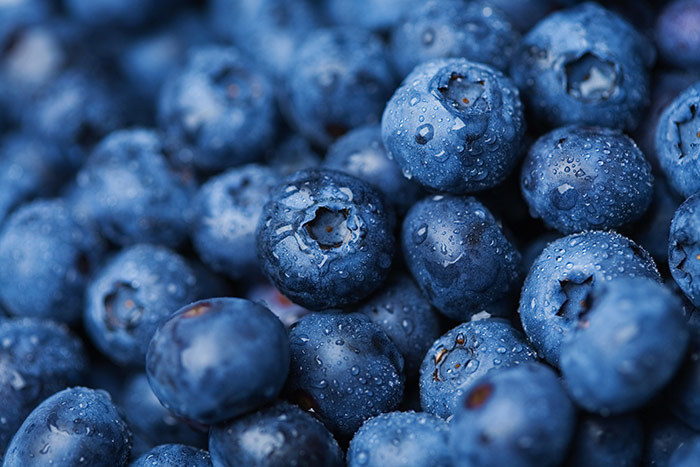
Store food in airtight containers, either glass or plastic. Aluminium trays with lids from supermarkets or variety stores are a good option too. Fiona also suggests storing portions of stews or casseroles in plastic or reusable freezer bags to save on space.
“If you store food in a plastic container, place a piece of baking paper or freezer separator sheets on top of the food so it stops any air between the food and the lid of the container, as this is how freezer burn can occur (those frosty ice crystals that form on your food, which can affect the colour, taste and texture of your dish when it’s reheated),” says Fiona.
Label everything
Make a note of what the dish is and when you made it. This will make it easier to identify things when you have a freezer full of food and you need to rotate stock to avoid waste.
Defrost and reheat meals properly
Some frozen meals can be put straight in the oven for cooking, but some you’ll have to defrost before reheating. The best way is to thaw foods is overnight in the fridge until they are fully defrosted. Leaving food out on the counter could be unsafe. If you’re defrosting in the microwave, ensure the container is microwave-proof and always use the defrost setting.
Use your food processor or blender
These handy appliances can make food prep for big-batch cooking easier. If you’re chopping up more than a couple of onions or a few bunches of herbs, it’s worth getting the food processor out.
Freeze in portions or servings
Got leftover sauces? Portion them out into individual serves in ziplock bags, then lie them down flat to freeze – once they’re frozen, you can stand them up like a file-card system, and you’ve got quick pasta sauce ready to go when you need it.
Rotate your supplies
While food in your freezer is technically safe to be stored forever, it’s good practice to rotate your containers, putting new things at the back and taking the old ones out to use first. This will ensure you’re eating everything when it’s at its best – food that’s been frozen for a long time can really lose its flavour and appeal.
Don’t overfill the freezer
A full freezer is more efficient than an empty one, but you should still leave room for air to circulate for effective operation. And the easier it is to find and organise your supplies, the better it will be.
Put your freezer in the right place
Your freezer will have to work harder (and will cost you more in power bills) if it’s in an area that experiences significant temperature fluctuations, such as the garage. If you can, find a spot in your house that has a steady temperature. If you’d prefer to have your freezer in the kitchen, you could opt for a ‘pigeon pair’ – a matching fridge and freezer.
CHOICE tip: Put a coin on top of a cup or container of frozen water in your freezer. If you’re worried there’s been a blackout or your freezer has died, check the cup. If the coin’s still on top of the water, your freezer stayed frozen even without power. If the coin is at the bottom, the freezer didn’t stay cold enough to keep its contents frozen.

